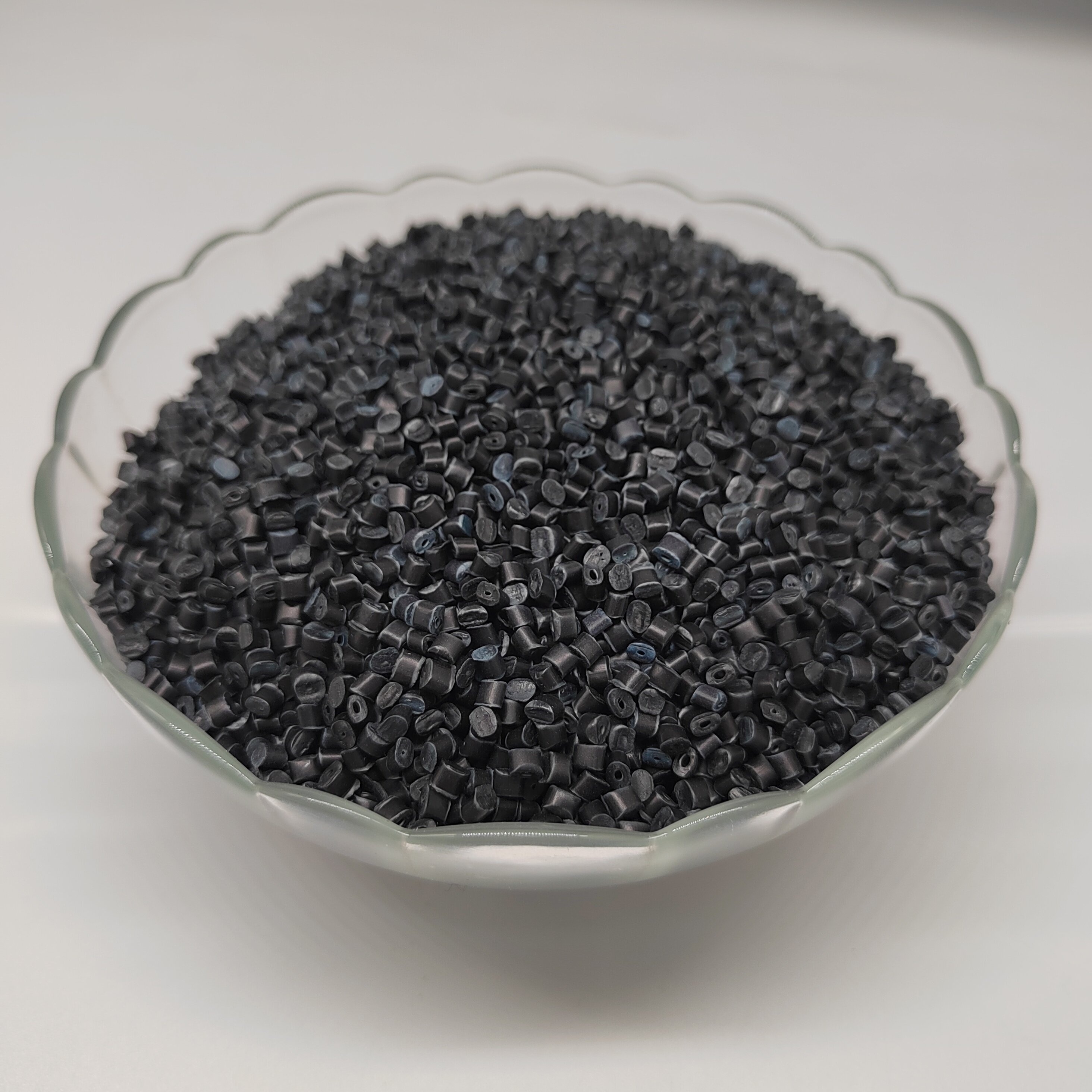Email format error
Email cannot be empty
Email already exists
6-20 characters(letters plus numbers only)
The password is inconsistent
Email format error
Email cannot be empty
Email does not exist
6-20 characters(letters plus numbers only)
The password is inconsistent

Offer Technical Support and Customized Solutions
The company is committed to creating new and improved plastic materials to meet the evolving demands of the market.

Electrifying Innovation: Exploring Flame Retardant Materials for Electric Vehicles
Introduction:
One of the most critical trends brought about by the rapid development of the automobile industry is lightweighting. Whether it is around traditional automobile engines or in the power batteries of new energy vehicles, various plastics can be seen, used in automobile parts. Common types of flame retardant materials include PP, PA, PU, PC, ABS materials, and various modified materials and composite materials composed of them.
Compared with traditional fuel vehicles, new energy vehicles have added components such as battery pack modules, charging piles and charging guns. The usage of engineering plastics for the battery pack module of a single new energy vehicle is about 30kg. The plastic shell of new energy vehicles is currently mainly used Modified PP, as well as modified PPS, PPO and other high temperature resistant plastics. Charging piles have a greater demand for engineering plastics due to higher usage standards and harsh usage environments. Each charging pile requires about 6kg of engineering plastics. Currently, the most common ones include PBT, PA and PC. The flame-retardant polymer materials currently used are mainly PP, PU, ABS and PC. According to the special needs of automobile parts, composite materials (alloyed), PA, PBT and PMMA are also used.
PP is the most commonly used polymer material among automotive plastics. It has excellent chemical corrosion resistance, simple processing and low cost. Currently it is widely used in automobile dashboards, battery pack casings, door guards, pillars, seat guards, bumpers, etc. However, due to the poor flame retardant properties of PP without added flame retardants, its LOI is only 17.8% and is very easy to burn.
Domestic and foreign research on automotive flame retardant PP mainly focuses on modifying the polypropylene matrix and developing polypropylene composite materials with excellent mechanical properties and flame retardant efficacy by adding low-toxicity, halogen-free flame retardants to meet the needs of automotive zero- Flame retardant requirements of components. At present, flame retardants suitable for PP are mainly additive flame retardants, and halogen-based flame retardants (such as bromine-based flame retardants, bromine-antimony synergistic flame retardant systems) and inorganic filled flame retardants are widely used. Agents (such as magnesium hydroxide, aluminum hydroxide), phosphorus nitrogen series (such as MPP, APP, MCA, phosphazene, phosphate ester, etc.) and intumescent flame retardants (IFR).
As one of the five major engineering plastics, PC is also quite mature in its application in automotive parts, such as automotive dashboards, lighting systems, heating plates, defrosters and even some bumpers made of PC alloys.
PC itself has certain flame retardancy and has certain advantages compared to other polymer materials (such as PE, PP, etc.), and the LOI can reach 21-24%. However, in application fields with relatively high flame retardant requirements for automotive parts, its flame retardant performance is still insufficient, and flame retardant modifications are still needed. PC used in auto parts is also moving closer to halogen-free and environmentally friendly when selecting flame retardants. The comprehensive performance of PC can be improved by adding a variety of additives or preparing composite flame retardants. In addition, PC is also the best choice to improve PC processing performance and flame retardant performance by forming composite materials with ABS, PBT, etc.
Flame retardant ABS
Before the rise of ABS in the automotive industry, it was also one of the most widely used polymer materials for home appliances in the world. According to incomplete statistics, about 80% of my country's ABS consumption comes from the field of home appliances, which is mainly due to the outstanding surface coating performance, durability and anti-corrosion properties of ABS. It is also these characteristics that make ABS a typical example in the field of automotive painting. However, ABS resin has only three elements, C, H, and O, in its molecular structure, so it does not have flame retardant properties. It has poor stability at high temperatures and is extremely easy to burn. At the same time, pungent odor and black smoke will be produced during the combustion process, and it cannot be directly used in automobile parts.
At present, the main application direction of ABS is through flame retardant or high temperature resistance modification, or mixed with PC to form PC/ABS composite materials. For application scenarios with strict flame retardant standards, brominated flame retardants are currently the most mainstream choice. . It is reported that about 70% of ABS used in electronic and electrical products uses brominated flame retardants.
Flame retardant PC/ABS
PC/ABS has the advantages of both PC and ABS, with better HDT and stability, and better processing performance. It is currently the plastic alloy with the largest output and the most mature technology, and is also the most widely used in the field of automotive parts. One of the materials. PC/ABS materials are used in parts such as car dashboards, battery packs, bodywork, and interiors.
However, it should be noted that there is still a "1+1 <2" situation in some indicators: PC itself is a self-extinguishing material, UL94 can reach V2 level, but the flame retardant performance of PC/ABS has declined. Need to make up. In addition to the halogen and phosphorus systems currently commonly used, the development direction worthy of attention is nano-flame retardants, such as nano-scale antimony trioxide, aluminum hydroxide, magnesium hydroxide, and nano-layered double hydroxide.
Other flame retardant materials
PP, PU, ABS and PC are flame-retardant polymer materials currently mainly used in the production of automobile parts. In addition, composite materials prepared by melting and blending two or more polymer materials are also a commonly used material at present, such as PC/ABS, PC/PBT, PC/FR composite materials, etc.
Specific to the case, Polymaker has launched three PC-based 3D printing materials for the production of automotive parts. The three products are Polymaker PC-ABS, Polymaker PC-PBT, and PolyMax PC-FR. Each of the three products has its own characteristics, and all have good performance in terms of heat resistance, impact resistance, easy processing and flame retardant properties. Polymaker PC-PBT is improved on the basis of Covestro's Makroblend® series products to improve the overall performance of the material. Similarly, PolyMax PC-FR has greatly improved the flame retardant performance of Covestro's Makrolon® products, making the material UL94 reach V0 level, and the material is used in new energy vehicle battery casings.
Future research focus on flame retardant materials
Flame retardants used in polymer materials supporting auto parts should develop in the direction of environmental protection and high performance in the future, focusing on research on compound synergistic flame retardant technology, halogen-free flame retardant, intumescent flame retardant, ultra-fine, and nanometer Chemical technology, high-efficiency surface chemical modification technology, and multi-functional technology also need to be improved in various special properties to improve the comprehensive performance of flame-retardant polymers used in automotive parts.
At present, there are no relatively complete laws, regulations and testing methods in the field of automotive flame retardancy. In order to better serve and promote the development of the automotive parts flame retardant industry, a more effective testing method for flame retardant polymer materials for automotive parts has been developed. and product regulations will be significant.
The future development direction of flame-retardant plastics
Generally speaking, when preparing flame-retardant plastics, most of them will increase their limiting oxygen index LOI to about 25-35%, in order to effectively improve the overall safety index of the car. In addition, coupled with the current dual background of electrification and carbon neutrality, petroleum-based products such as plastics and various flame retardants containing halogens will be subject to more restrictions. Therefore, the future development direction of flame-retardant plastics will not only require sufficient mechanical properties to meet lightweight needs, but also areas such as electric vehicles will require materials that focus on flame-retardant, electrical, processing, and environmental protection requirements.

